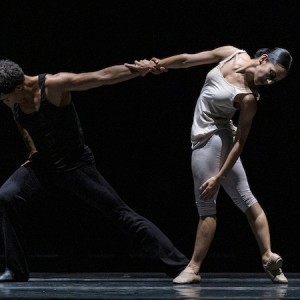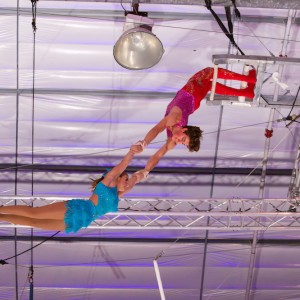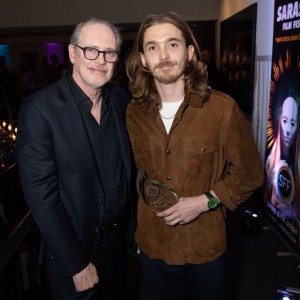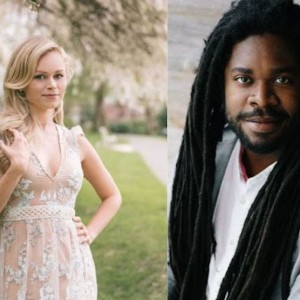“It had done what we set out to do.” Simply, concisely, bluntly, Ringling Museum Executive Director Steven High sets the record straight. Amidst whispers of financial this or that, of attendance levels, of whatever, High cuts to the quick to call the close of the Ringling International Arts Festival, just one year shy of its 10-year anniversary, what it is—a sign of success, and signal of much more to come.
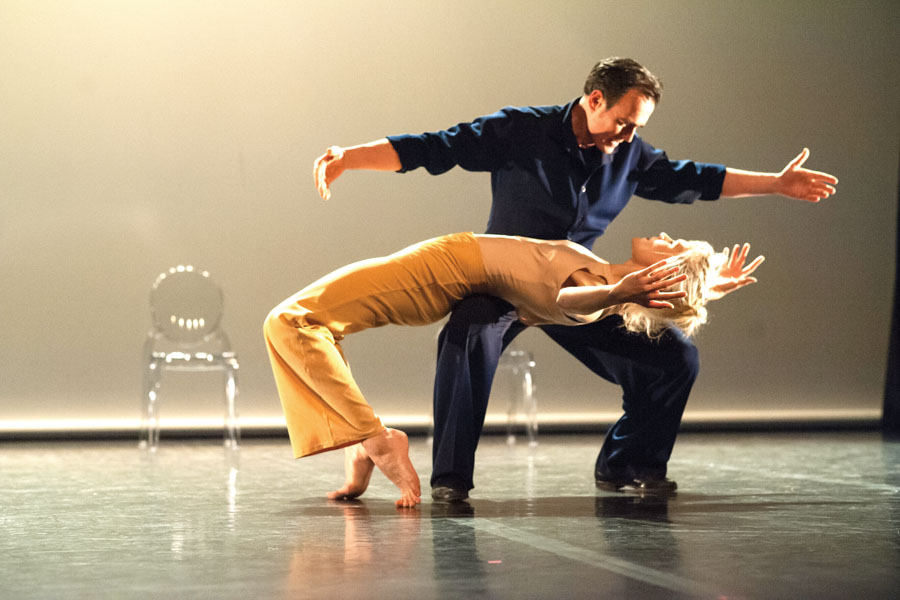
SIN SALIDA FROM UNION TANGUERA AND KATE WEARE COMPANY.
“I’m sad to see RIAF go,” High admits, and his tenure thus far supports the sentiment. Initially attracted to the post seven years ago because of the festival, High spent the first several years fighting to keep the festival solvent and stable, looking to ensure RIAF in perpetuity. And in those seven years, High became one of those most dedicated to the annual performances that graced RIAF stages. “I really enjoyed it,” he says, “because it was fun—and I’m one of the few who saw every single one.” But as the festival’s name got bigger and aspirations grew on pace, questions arose about whether or not RIAF remained the optimal outlet for the Museum’s ambitions for contemporary performance, or whether it was time to move on from the three-day festival format. The evidence seemed overwhelming. To put it another way: “It had done what we set out to do.” Like a yearly booster shot, RIAF, for nine years, invigorated (shocked?) the local arts scene with a high-powered injection of contemporary performance from around the globe. Boundaries were pushed; so were buttons. Everyone had a good time, and, while their eyes were fixed on the stage, contemporary performance gained a steady foothold in the hearts, minds, galleries and theaters of Sarasota.
But RIAF also posed its drawbacks, over time, for both the museum and its guests. That exhilarating festival feeling that hooks the audience—a heady mix of absolute presence and an overarching sense of urgency, heightened by hundreds also hustling to catch what they can from a million moments that will never come again—can translate poorly to museum staff, whose job it becomes to maintain the madness. Between managing schedules, assisting visiting artists, setting up stages, tearing them down and then doing the best they can to direct the cartographically challenged to their destination, even RIAF superfans like High had to admit the labor-cost became “excessive.” But, more importantly, the format itself began to show its limitations. Though interest grew, not everyone could devote three days to catch each performance (a weekend wedding meant missing it all), and both audiences and artists alike had expressed frustration at a constrained timeline that left little opportunity for community engagement. Most people only saw two or three performances, says High. “We really felt we weren’t getting the full benefit of the performers while they were here,” he says.
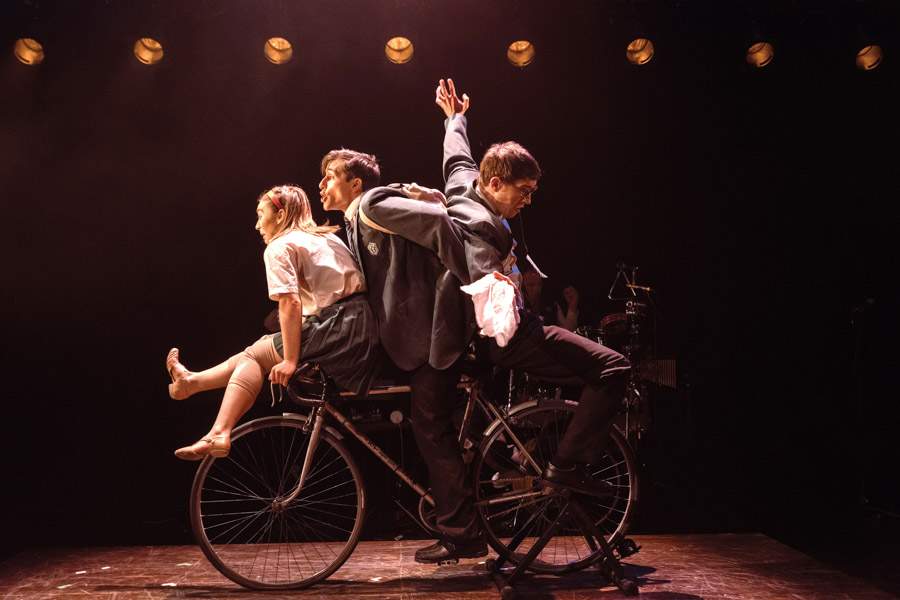
NOF-9, THEATER RE AND THE NATURE OF FORGETTING, PHOTO BY DANILO MORONI.
However, at roughly the same time that the festival was perhaps getting a bit big for its britches, the New Stages series began to come into its own. Begun seven years ago, the Ringling Museum New Stages program originally offered a series of almost complementary contemporary performances for the winter and spring seasons, something to hold over the audience until next October. It wouldn’t stay that way. “[New Stages] slowly grew up into a very strong series of performance programs,” says High, and as museum leadership examined ways to increase contemporary performance throughout the year, the expenditures in manpower and capital devoted to just three days out of that year began to look, well, excessive. New Stages, on the other hand, looked like a model of efficiency just beginning to show its potential. Music, dance, theater—it all came through the New Stages program. “That was the genesis,” says High, and soon the decision was made to close the festival and plan a whole season of contemporary performance at The Ringling, running from October through May each year, and under the New Stages name.
Advantages became apparent immediately. Not only would more people be able to attend shows throughout the year, but they would not be forced to choose between one artist or the other—an unfortunate side effect of festival programming and limited time. And scheduling, which could previously be something of a nightmare, became a breeze. Instead of wrangling visas for visiting artists who would need to be in town for three particular days or not at all, The Ringling could work around the artists’ schedules, finding time that worked for everybody involved, maybe when they were already stateside for something else. Even better, according to Sonja Shea, assistant curator of performance at the Ringling Museum, these artists can then stay longer and engage with the community while they’re here, leading workshops, giving presentations and answering questions for a hungry audience instead of being herded from performance to performance and then whisked away. “And the audience is such an important part of performance,” says Shea. “So for the artists to be able to connect with the audience in this way is pretty powerful.”
In October, as the New Stages season premieres in place of RIAF, theory becomes reality, but it’s a smooth transition with RIAF veteran Matthew Duvall, who performed at the festival in 2016 with the musical ensemble eighth blackbird. Falling in love with the Ringling grounds upon his last visit, the percussionist returns with plans to celebrate that campus, placing fellow percussionists across the estate for a campus-wide experience. One of these artists, eco-acoustic composer Matthew Burtner, will world premiere a new work titled Transient Landscapes, created using sounds from nature and performed in the arboretum. And while Duvall may still only be around for about three days, those three days become that much more versatile without the pressures of the rest of a festival. On the Thursday before the performances, Duvall will lead a walk-and-talk, taking audiences around the estate to give a behind-the-scenes look at what he’s creating and why. Similarly, in November, when the London-based international ensemble Theatre Re arrives to perform a piece influenced by and exploring identity and the effects of dementia, they will also lead a workshop full of pre-med students from local colleges, as well as local caregivers.
The change won’t be a money-saving venture for the museum, says High, but RIAF never made money off the ticket sales anyway and performance at The Ringling has always been subsidized by other avenues. No, the museum will foot roughly the same bill, but expecting larger returns, including the ability to commission new work. This year, in something of a first, Ringling Museum will welcome a local group of dancers, Moving Ethos, as artists-in-residence over the course of the year, culminating in a series of performances in April. It’s just one of the many ways that the end of RIAF spells the beginning of something new, for The Ringling and for contemporary performance in Sarasota.
“It’s going to ask more of [the audience],” says High. “To take a chance and to explore with us. As we are a historic museum, a circus museum and an art museum, we’re also a museum about the art of our time.”





